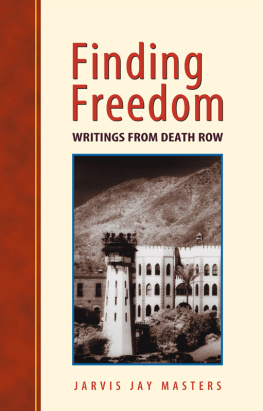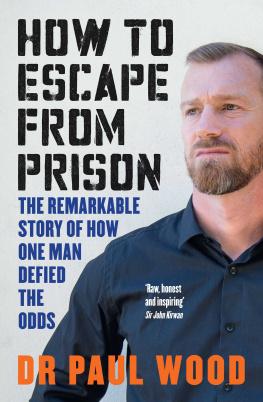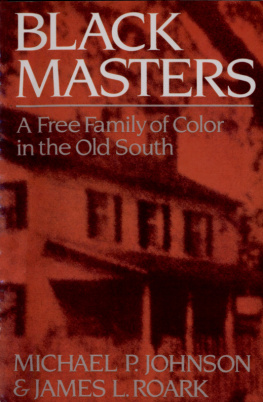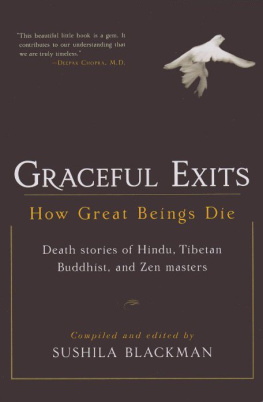Jarvis Jay Masters - Finding Freedom: Writings from Death Row
Here you can read online Jarvis Jay Masters - Finding Freedom: Writings from Death Row full text of the book (entire story) in english for free. Download pdf and epub, get meaning, cover and reviews about this ebook. year: 1997, publisher: BookBaby, genre: Detective and thriller. Description of the work, (preface) as well as reviews are available. Best literature library LitArk.com created for fans of good reading and offers a wide selection of genres:
Romance novel
Science fiction
Adventure
Detective
Science
History
Home and family
Prose
Art
Politics
Computer
Non-fiction
Religion
Business
Children
Humor
Choose a favorite category and find really read worthwhile books. Enjoy immersion in the world of imagination, feel the emotions of the characters or learn something new for yourself, make an fascinating discovery.
- Book:Finding Freedom: Writings from Death Row
- Author:
- Publisher:BookBaby
- Genre:
- Year:1997
- Rating:4 / 5
- Favourites:Add to favourites
- Your mark:
Finding Freedom: Writings from Death Row: summary, description and annotation
We offer to read an annotation, description, summary or preface (depends on what the author of the book "Finding Freedom: Writings from Death Row" wrote himself). If you haven't found the necessary information about the book — write in the comments, we will try to find it.
Finding Freedom is a deeply moving, life-affirming memoir written from the netherworld of San Quentins Death Row. Offering stories that are sometimes sad, funny, poignant, revelatory, frightening, soul-stirring, painful, and uplifting, Jarvis Masters traces his remarkable spiritual growth in an environment where despair and death are constant companions. His book is a testament to the tenacity of the human spirit and the talent of a fine writer.
Masters tales are a must-read pass to San Quentin when it was a Level IV (of four criminal/felony levels) prison and the inmates ran the blocks. His book is a word album of people and incidents on the yards, on the tiers and in the cells as races and cultures collide in a setting of despair and boredom. In one of his most powerful chapters, Sanctuary, Masters enters the upper yard on his first day, facing down the stairs of the established cons as they inspect the fish; then the door slams on his 5 x 9 cell that will be his home for the rest of his life.
The recidivists, the young parole violators who cycle through San Quentin on 90 day plus terms, generally for drug use, with little hope for treatment, jobs or housing on the outside, are the antagonists in many of his stories. And this brings us to the present. The California prison system and San Quentin are still largely populated by young parole violators, incarcerated for drug convictions or dry outs. These youngsters, unaware, ignorant or plainly apathetic about informal prison rules, seek to achieve the OG (Old Gangster) status of long time inmates through predatory violence. Masters writes of his frustrating attempts to cope with them at a time that Level IV inmates all mingled together. San Quentin is now a Level II prison, confining a gentler, generally nonviolent person within its massive perimeter, and Masters now is a practicing Buddhist, a transformation remarkably documented in the books timeline
Three Strikes laws and the huge campaign contributions of the CCPOA, the California prison guards union, have lead to unparalleled growth in Californias prison population with Lifers (2nd degree murder or kidnapping crimes) eligible for parole and violators routinely jammed together in every facility. Californias Level IV violent cons are housed in Pelican Bay and other specially designated Security Housing Units (SHU), yet Masters Death Row for men remains at San Quentin. And the timelessness of Masters stories is reflected by the fact that Lifers still have the respect of almost all groups in the prison, while the California Governor fosters despair and hopelessness with an anti-parole stance. This book is an electrifying read if you have never been incarcerated. You can share Masters gradual transformation from a mind-your-own-business, somewhat antisocial individual, to a compassionate prosocial inmate.
Jarvis Jay Masters: author's other books
Who wrote Finding Freedom: Writings from Death Row? Find out the surname, the name of the author of the book and a list of all author's works by series.













